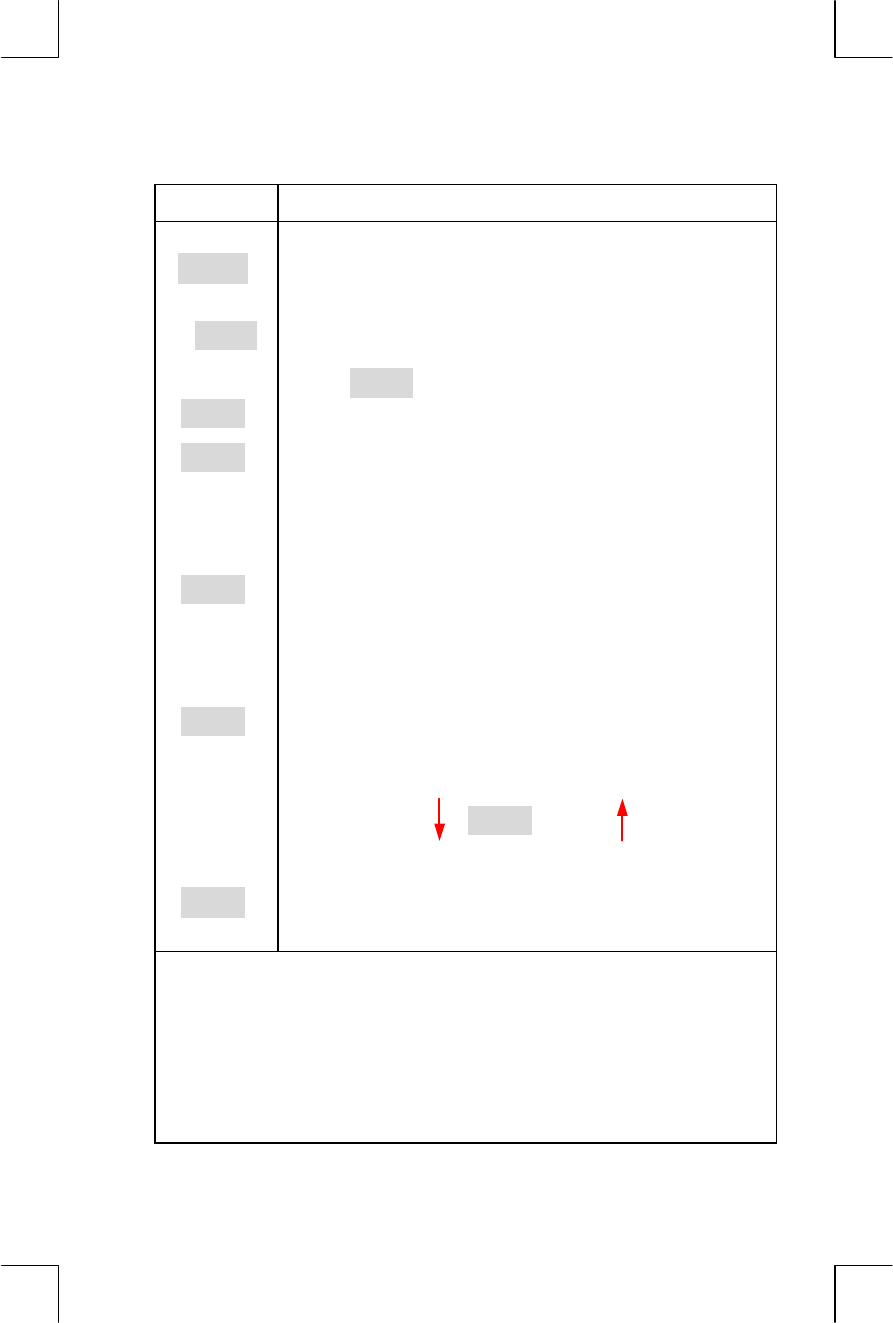
5: Time Value of Money 63
File name : 17BII-Plus-Manual-E-PRINT-030709 Print data : 2003/7/11
Table 5-1. TVM Menu Labels
Menu Label Description
First Level
S
!
Stores (or calculates) the total number of payments or
compounding periods.
*†
(For a 30-year loan with
monthly payments, N=12 x 30=360.)
@
T
Shortcut for N: Multiplies the number in the display by
P/YR, and stores the result in N. (If P/YR were 12, then
30
@
T
would set N=360.)
U
Stores (or calculates) the nominal annual interest rate
as a percentage.
V
Stores (or calculates) the present value―an initial cash
flow or a discounted value of a series of future cash
flows (PMTs + FV). To a lender or borrower, PV is the
amount of the loan; to an investor, PV is the initial
investment. If PV paid out, it is negative. PV always
occurs at the beginning of the first period.
W
Stores (or calculates) the dollar amount of each periodic
payment. All payments are equal, and no payments are
skipped. (If the payments are unequal, use CFLO, not
TVM.) Payments can occur at the beginning or end of
each period. If PMT represents money paid out, it is
negative.
Stores (or calculates) the future value―a final cash
flow or a compounded value of a series of previous
cash flows (PV + PMTs). FV always occurs at the end of
the last period. If FV is paid out, it is negative.
.
e
X
Second Level
Y
Specifies the number of payments or compounding
periods per year.† (it must be an integer, 1 through
999.)
*
When a non-integer N (an “odd period”) is calculated, the answer must be
interpreted carefully. See the savings account example on page 71.
Calculations using a stored, non-integer N produce a mathematically
correct result, but this result has no simple interpretation. The example on
page 172 uses the Solver to do a partial-period (non-integer) calculation in
which interest begins to accrue prior to the beginning of the first regular
payment period.
†
The number of payment periods must equal the number of compounding periods. If
this is not true, see page 87. For Canadian mortgages, see page 197.


















